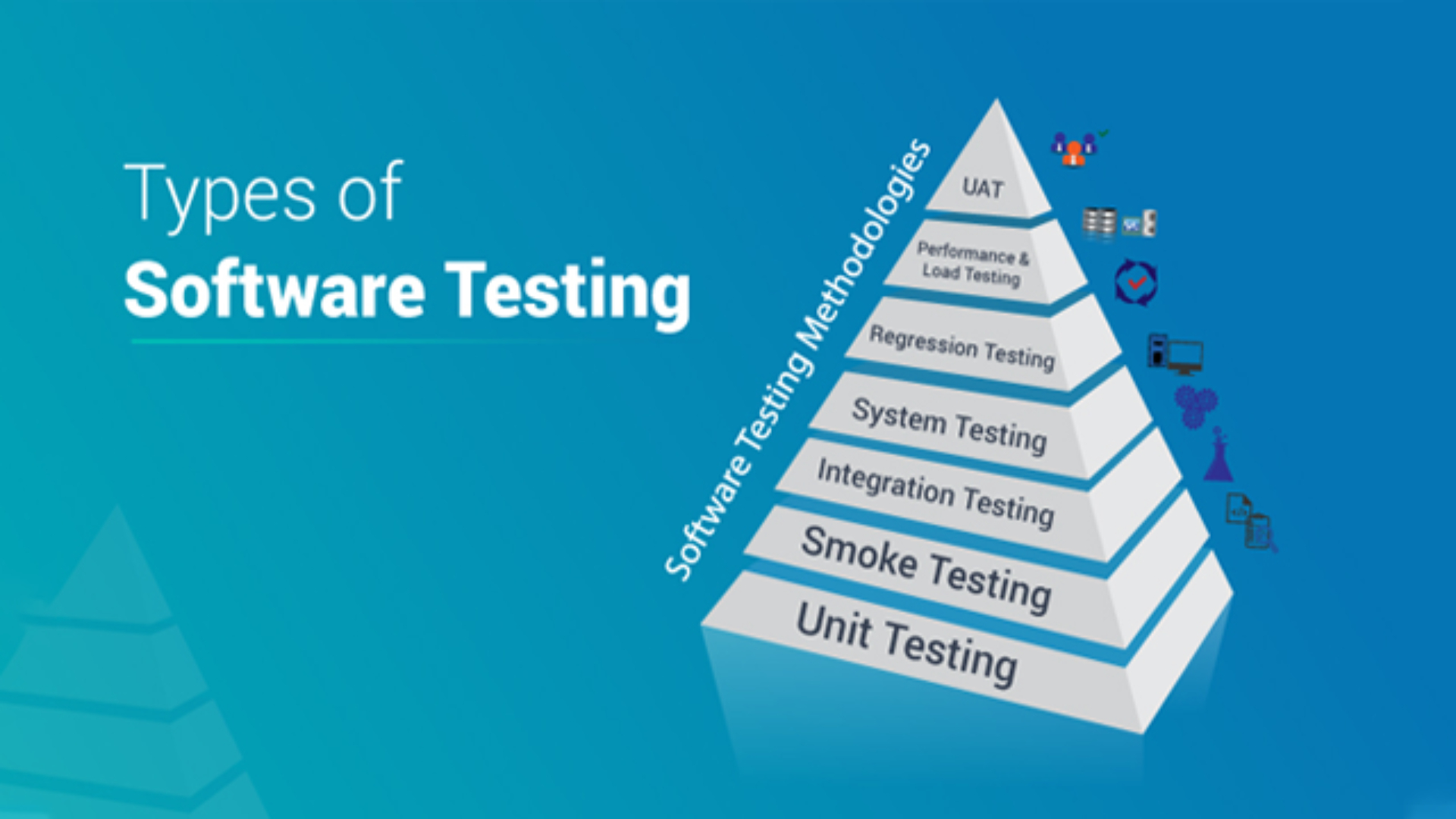Software Testing Learning

what is software testing?
Software testing is the process of evaluating and verifying that a software product or application does what it is supposed to do.
It is also a method to check whether the actual software product matches the expected requirements and to ensure that the software product is defect-free.
Two different components constitute together as Software Testing. They are Software Verification and Software Validation.
Software Verification:
Software validation is a type of static analysis technique or testing done without executing code.
It is also the collection of methods used to determine if the software system that is being constructed is being built right.
Software Validation:
Software validation is a type of dynamic analysis technique or testing done by executing code.
Software Inspection:
A software inspection is a process of trying to find defects in documents during various phases of the software development process.
It is also a particular technique that can be used to verify the system against the specification.
Testing is mainly done to ensure – Software Errors, Faults, and Failures.
Errors – Mistakes made by the developers while coding are errors. The amount of mist match
between the desired output and the actual software output is treated as an error.
Faults – The error that has occurred and which may lead to failure of a system is known as a
fault or bug. Faults arise from errors.
Failures – The performance failure of the system in processing a specific task is considered a
failure. Failure arises from faults.
What are the benefits of Software Testing?
The benefits of software testing is software Cost-Effective, Product quality, and Customer Satisfaction.
Cost-Effective: It is one of the important advantages of software testing. Testing any IT project on time helps you to save your money for the long term. In case if the bugs caught in the earlier stage of software testing, it costs less to fix.
Product quality: It is an essential requirement of any software product. Testing ensures a quality product is delivered to customers.
Customer Satisfaction: The main aim of any product is to give satisfaction to their customers. UI/UX Testing ensures the best user experience.
Types of software testing:
Unit Testing
Unit testing is a type of software testing where individual units on components of a software are tested.
Integration Testing:
Integration testing is a software testing method where individual units on components of a System are combined and tested as a group to ensure the work together seamlessly
System Testing:
System testing is a software testing phase where the entire software system is tested as a whole to ensure that all components and modules function together according to specified requirements.
Acceptance Testing
Acceptance testing is the final phase of software testing where the software is evaluated to determine whether it meets the specified acceptance criteria and is accepted by stakeholders.
It validates that the system satisfies business requirements and is ready for deployment.
Alpha Testing:
Alpha testing is the initial phase of software testing where a select group of internal users access the software fare defects and usability before it is released to a broader audience.
Beta testing:
Beta testing is a phase of software testing where a pre-release version of the software is made available to a limited team. group of external users outside the development team.
The goal is to gather user feedback, identify potential issues, and make improvements before the official release.
Stress Testing:
Stress testing is a type of software testing that evaluates the stability and performance of a system under extreme conditions, such as on resource constraints, like high user loads or resource constraints.
Regression Testing
Regression testing is the process of verifying that recent changes to the codebase have not adversely affected existing features by re-executing previously conducted tests.
Cyclomatic complexity Testing:
Cyclomatic complexity Testing is an approach in software testing that measures the complexity of a program by counting the number of unique paths through its source code.
It provides insights into the code’s structure and potential areas of risk, aiding in the identification of complex and error-prone sections for thorough testing.
white box testing:
I white box trusting & is a software testing method that examines the internal logic and structure of a program Testers ensure all use knowledge of the code implementation to design test coves statements, branches, and conditions are executed and verified four Correctness.
Back box testing:
Black box testing is a software testing method where the internal logic, structure, on implementation of the system being tested are not known to the tester. Test cages are designed based on the system’s specifications inputs and expected outputs, focusing on validating the functionality and behavior of the software without knowledge of its internal details.
Grew Box Testing or Gray Box Testing:
Grew Box Testing or Gray Box Testing is a software technique to test a software product or application with partial knowlwdge of internal structure of the application.
Alpha Testing vs Beta Testing
| No | Alpha Testing | Beta Testing |
|---|---|---|
| 01 | It is done by Internal testers of the developer team. | It is done by real users. |
| 02 | It is an internal test performed within the developer team. | It is an external test, carried out in the user’s environment. |
| 03 | Alpha testing users both black box and white box testing techniques. | Beta testing uses the black box testing technique |
| 04 | Identifies possible errors. | Check the quality of the product. |
| 05 | Long execution cycles. | It only takes a few weeks. |
| 06 | Developers start fixing bugs as soon as they are identified. | Errors care is necessary. found by users and feedback. |
Software Tester:
The Software Tester will conduct tests, analyze the results, and report observations to the design team.
Software Tester Responsibilities:
01. Analyzing the Requirements from the client
02. Participating in preparing Test Plans
03. Preparing Test Scenarios, test cases
04. Preparing Suggestion Documents to improve the quality of the application
05. Communication with the Test Lead / Test Manager
06. Conducting Review Meetings within the Team
Software Testing Questions
01. Define software testing and benefits.
@. Software testing is the process of evaluating and verifying that a software product or application does what it is supposed to do.
@. It is also a method to check whether the actual software product matches the expected requirements and to ensure that the software product is defect-free.
#. The benefits of software testing are Cost-effective, Product quality, and Customer satisfaction.
Cost-Effective: Cost-Effective is one of the important advantages of software testing.
Product quality: Product quality is an essential requirement of any software product. Testing ensures a quality product is delivered to customers.
Customer Satisfaction: The main aim of any product is to give satisfaction to its customers.
02. What is the difference between software verification and Validation?
Software Verification vs Software Validation
| No | Software Verification | Software Validation |
|---|---|---|
| 01 | Software validation is a type of static analysis technique or testing done without executing code. | Software validation is a type of dynamic analysis technique or testing done by executing code. |
| 02 | Verification is the static testing. | Validation is the dynamic testing. |
| 03 | It includes checking documents, design, codes and programs. | It includes testing and validating the actual product. |
| 04 | It does not include the execution of the code. | It includes the execution of the code. |
| 05 | It checks whether the software conforms to specifications or not. | It checks whether the software meets the requirements and expectations of a customer or not. |
| 06 | The goal of verification is software architecture and specification. | The goal of validation is an actual product. |
03. Write the types of software testing and definitions.
@. Types of software testing:
01. Manual testing:
Manual testing is a type of testing that are tested software without the use of any kind of automation tool.
02. Automation testing:
Automation testing is a type of testing that are tested software by the use of any kind of automation tool.
03. White box testing:
White box testing is a software testing method where the internal logic and structure on implementation of the system being tested are known to the tester.
04. Black box testing:
Black box testing is a software testing method where the internal logic and structure on implementation of the system being tested are not known to the tester.
05. Grew Box Testing or Gray Box Testing:
Gray Box Testing is a software testing or technique to test a software product or application with partial knowledge of internal logic and structure of the system to the tester.
06. Functional Testing:
Functional testing verifies that a software application’s features and functions work as expected, ensuring it meets specified requirements.
07. Non- Functional Testing:
Non-functional testing checks how well a software system performs in areas like speed, security, and usability, beyond its basic functions.
08. Unit Testing:
Unit testing is a type of software testing method where individual units on components of a software are tested.
09. Integration Testing:
Integration testing is a software testing method where individual units on components of a software are combined and tested as a group to ensure the work together seamlessly.
10. System Testing:
System testing is a software testing phase where the entire software system is tested as a whole to ensure that all components and modules function together according to specified requirements.
11. Acceptance Testing:
Acceptance testing is the final phase of software testing where the software is evaluated to determine whether it meets the specified acceptance criteria and is accepted by stakeholders.
12. Alpha Testing:
Alpha testing is the initial phase of software testing where a select group of internal users access the software fare defects and usability before it is released to a broader audience.
13. Beta testing:
Beta testing is a phase of software testing where a pre-release version of the software is made available to a limited team or group of external users outside the development team.
14. Stress Testing:
Stress testing is a type of software testing that evaluates the stability and performance of a system under extreme conditions, such as high user loads or resource constraints.
15. Regression Testing
Regression testing is the process of verifying that recent changes to the codebase have not adversely affected existing features by re-executing previously conducted tests.
16. Cyclomatic complexity Testing:
Cyclomatic complexity Testing is an approach in software testing that measures the complexity of a program by counting the number of unique paths through its source code.
04. What is Cyclomatic Complexity?
Cyclomatic complexity is an approach in software testing that measures the complexity of a program by counting the number of unique paths through its source code.
Alpha Testing vs Beta Testing
| No | Alpha Testing | Beta Testing |
|---|---|---|
| 01 | It is done by Internal testers of the developer team. | It is done by real users. |
| 02 | It is an internal test performed within the developer team. | It is an external test, carried out in the user’s environment. |
| 03 | Alpha testing users both black box and white box testing techniques. | Beta testing uses the black box testing technique |
| 04 | Identifies possible errors. | Check the quality of the product. |
| 05 | Long execution cycles. | It only takes a few weeks. |
| 06 | Developers start fixing bugs as soon as they are identified. | Errors care is necessary. found by users and feedback. |
Software Tester:
The Software Tester will conduct tests, analyze the results, and report observations to the design team.
Thank You!






Leave a Reply